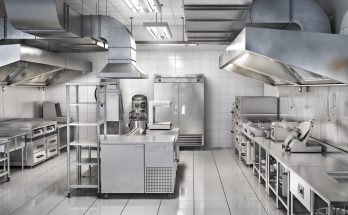Espresso coffee machines are intricate devices designed to deliver the perfect shot of espresso. In Hong Kong, where coffee culture is thriving, understanding the ingredients and composition of these machines is essential for coffee enthusiasts and baristas alike. This exploration delves into the key components that make up an espresso coffee machine hk.
- Boiler System:
The boiler is a fundamental component responsible for heating water to the optimal brewing temperature. Espresso machines typically have either a single boiler, dual boiler, or heat exchange system. The type of boiler system influences the machine’s ability to simultaneously brew coffee and steam milk.
- Group Head:
The group head is where the magic happens. It is the component that holds the coffee grounds and facilitates the extraction process. In traditional espresso machines, you’ll find one or more group heads where portafilters are attached for brewing espresso.
- Portafilter and Basket:
The portafilter is a handle-like device that holds the coffee grounds and attaches to the group head. Inside the portafilter, there is a basket where the coffee grounds are placed. The size and shape of the basket can influence the flavor and strength of the espresso.

- Pump System:
Espresso machines use a pump system to pressurize water and force it through the coffee grounds, extracting the flavors and creating the rich, concentrated espresso. Pumps can be either vibration pumps or rotary pumps, each with its own set of characteristics.
- Control Panel and Interface:
Modern espresso machines often come equipped with a control panel or digital interface. This allows users to adjust brewing parameters such as water temperature, shot duration, and pressure. The interface may also include programmable buttons for different coffee volumes.
- Steam Wand:
The steam wand is an essential component for creating frothed milk for drinks like lattes and cappuccinos. It uses pressurized steam to heat and froth milk, adding versatility to the espresso machine for crafting various coffee beverages.
- Water Reservoir or Connection:
Espresso machines can be equipped with a water reservoir for manual filling or have a direct water connection for continuous water supply. The size of the reservoir and the ease of access for refilling are considerations in the design.
- Drip Tray:
The drip tray is located beneath the group head and portafilter to catch any drips or spills during the brewing process. It is a removable component for easy cleaning and maintenance.
- Cup Warmer:
Some espresso machines feature a cup warmer, often located on the top of the machine. This allows cups to be preheated, maintaining the ideal temperature for serving espresso.
- Body and Housing:
– The body and housing of the espresso machine contribute to its aesthetic appeal and durability. Materials such as stainless steel, aluminum, or plastic are commonly used, and the design may vary from sleek and modern to classic and traditional.
Conclusion:
Understanding the ingredients and composition of an espresso coffee machine hk is key to appreciating the art and science of espresso preparation. Whether you’re a home barista or a coffee shop owner, knowing the role each component plays in the espresso-making process allows for a deeper appreciation of the craft and the ability to fine-tune your brewing preferences.




